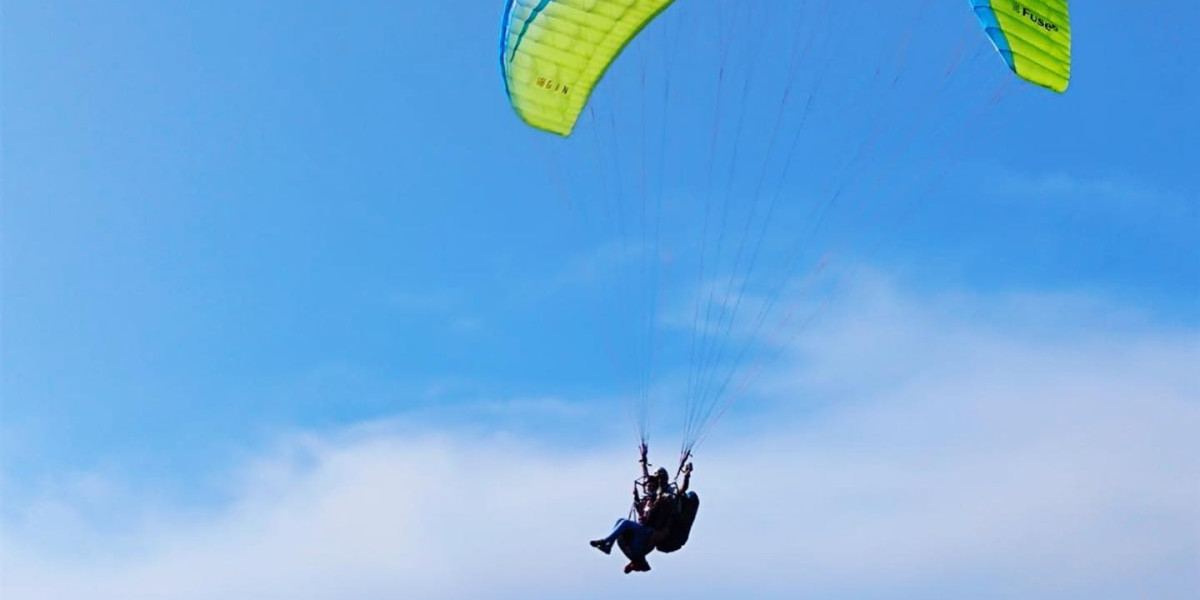Every year, new pilots make their first paragliding flight. This fun activity allows the discovery of new sensations during take-off and landing. The regulars manage to fly for several hours without setting foot on the ground. Adrenaline Parapente reports on the distance records in paragliding and the techniques to stay in the air for a long time.
What is paragliding and how does it work?
Paragliding is a single or two-seater equipment that allows you to navigate for fun in space. This aerial practice consists in launching oneself into the air and staying there for a long time thanks to different techniques based on the use of ascents or currents. Paragliding can be likened to an aircraft. It consists of a wing or sail, lines, brakes and an accelerator.
All these elements work together to allow the paraglider pilot to fly a long distance with an unobstructed view of the area being flown over. On take-off, the wing inflates and counteracts the wind direction. To fly a long distance, it is necessary to apply the correct navigation technique. This can be learned during a course at a paragliding club or training centre.
What are the best techniques for flying long distances?
There are three methods that allow the paraglider to stay in the sky for a long time. You can play with warm air masses, updrafts or experiment with dynamic flight. The first question is whether you can paraglide everywhere, and whether there are any places you should avoid if you want to stay in the air for a long time.
The thermal current method
The thermal current technique is the most common way to stay in the air for a long time when paragliding. It is a very efficient way to gain altitude by paragliding by flying against the thermal air bubbles. Thermal air bubbles are columns of warm air that spread out from the ground.
The earth is heated by the sun's rays and increases the temperature of the surrounding air. A thermal air bubble rises in the form of columns and allows the paraglider to gain altitude. The pilot flies in the opposite direction to the thermal currents in order to stay in the air for a long time.
The updraft method
In contrast to the hot air bubble technique, the updraft method does not rely on heating the ground. As the updraft rises into the sky, it carries air which the paraglider pilot uses to fly. He exploits the effect of the rising wind to take off and keep himself in the air.
The technique of dynamic flight
The technique of dynamic flight consists of taking off in a paraglider from a mountain, a hill, etc. By spreading out in the opposite direction to the relief, the wind is redirected upwards to create an upward force that the paraglider pilot exploits to take off. Enrol in a centre specialising in paragliding training to master the practice of this activity. Joining a club allows for rapid improvement.
How to choose a good take-off site for long-distance flights?
In order to fly a long distance successfully, the paraglider pilot has to define his or her take-off point well. Whatever your level, a good start is crucial to staying in the air and flying for a long time. To choose a good launch site, ask local pilots or clubs. They will be able to provide you with information about the launch site.
Depending on the route you are planning, choose a site that offers the right starting altitude for easy flying. Also consider the orientation of the take-off. For a long flight, choose a launch site that allows you to take off from the south or east side.
Planning a long-distance flight: what to consider?
In order to have a successful long-distance paragliding flight in a competition or cross-country event, there are some key elements that need to be taken into account. When planning for a competition or a paragliding day, consider the following points
- the weather forecast,
- thermal space,
- terrain,
- beacons,
- valley breezes, etc.
These elements allow you to better understand the characteristics of your route and to define the technique for a long flight or cross country flight. There are various applications on the internet that can help you with this. By installing them, you receive real-time data on the weather and other parameters necessary for good planning.
Paragliding distance records in France and in the world
Over the years, paragliders have improved their technique to fly better. New records are regularly set in France and around the world. In May 2019, the pilot Frédéric Delbos succeeded in France in flying a distance of 417 km. In doing so, he beat the previous record set by Frenchman Martin Morlet in 2016 (413.67 km).
The world record is held by the American Sébastien Kayrouz. With 612 km of paragliding flight, he pulverised the previous record of 582 km set by a trio of Brazilian paragliders.
To enjoy paragliding, don't hesitate to make a reservation at Adrenaline Parapente.

